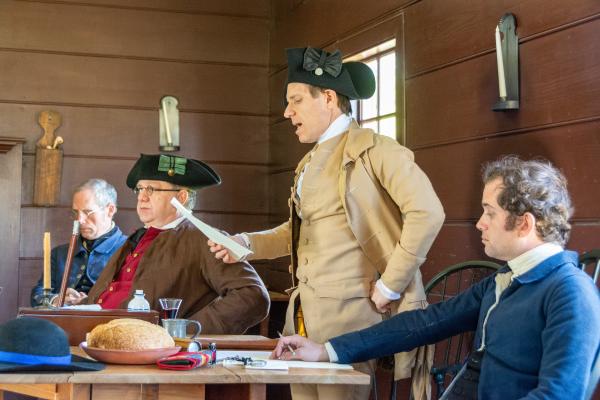Author: Matt Knight, Historical Interpreter, DNCR
The word is out: 2026 will be a critical year in both our state and national history. On July 4, Americans will come together to commemorate the signing of the Declaration of Independence 250 years ago.
The American Revolution was more than just the creation of this founding document, though. Across 20 current U.S. states, British and German forces and their Loyalist auxiliaries fought Patriot forces in over 200 skirmishes and battles spanning the years 1775 and 1783. North Carolina played a role in the American Revolution from its early stages, with major battles occurring here in 1780 and 1781. Several locations have been preserved and are open to the public as state historic sites and parks. Here is just a sample of Revolutionary-Era sites we highly encourage you to visit.
Brunswick Town/Fort Anderson
Port Brunswick, south of Wilmington, was a small but important coastal town as the American Revolution unfolded. Two royal governors, Arthur Dobbs and William Tryon, resided at a house in Brunswick called Russellborough, making the town the seat of executive authority in the colony. The remains of the once-impressive home can be seen at the site today. During the Stamp Act protests of 1765 – 1766, a mob of around five hundred surrounded Russellborough until British officials agreed not to enforce the act in Brunswick Town. During the American Revolutionary War, residents abandoned Brunswick Town, the British burned Russellborough, and a later fire engulfed the town.
Today, visitors to Brunswick Town/Fort Anderson State Historic Site can see a complex of 65 building ruins, including the remaining brick walls of St. Philips Church, as well as some of the best-preserved Civil War earthworks in America at Fort Anderson.
Historic Halifax
Halifax is currently a small port town along the Roanoke River in eastern North Carolina. From 1776 to 1782, Halifax was the state capital and seat of power for the revolutionary government. On April 12, 1776, North Carolina’s Fourth Provincial Congress adopted the Halifax Resolves, making North Carolina the first American colony to formally recommend independence from Great Britain. That same year, in the Fifth Provincial Congress at Halifax, lawmakers drafted and adopted North Carolina’s first state constitution. On May 7 – 11, 1781, local Whig militia fought British troops under Charles Cornwallis at the Battle of Halifax, marking the only time during the war that British troops marched into town.

Historic Halifax is a state historic site featuring 18th- and early 19th-century buildings. The Owens Home, built around 1760, was once the residence of a prosperous Halifax merchant named George Owens. Other buildings open to the public, like the Eagle Tavern, postdate the American Revolution. Guided tours illuminating the lives of the town’s White, Black, and Native American residents are offered from 10 a.m. to 3 p.m. Tuesday – Saturday.
Overmountain Victory State Trail
This North Carolina state trail is part of the much larger 330-mile Overmountain Victory National Historic Trail that spans four states. In response to British army incursions into North Carolina in 1780, backcountry Patriots known today as the Overmountain Men filtered into North Carolina from Tennessee and Virginia. Their ultimate destination was King’s Mountain, straddling the North Carolina and South Carolina line near Charlotte. On October 7, 1780, Patriot militia defeated Major Patrick Ferguson and his Loyalist militia in what became known as the Battle of Kings Mountain.
North Carolina’s Overmountain Victory State Trail will be 225 miles long and follows the routes that Overmountain Men took to reach the King’s Mountain battlefield. Though not complete, the trail will pass through Wilkes, Caldwell, Burke, Rutherford, and Polk Counties, with a spur line extending north through McDowell, Mitchell, and Avery Counties to Tennessee. In total, 57 miles of the trail are currently open to the public.
House in the Horseshoe
Philip Alston built House in the Horseshoe, in Sanford, North Carolina, around 1772. Named for a horseshoe-shaped bend in the nearby Deep River, the site tells a unique history. In the summer of 1781, a notorious Loyalist named David Fanning led a group of Tories to the property to skirmish with Patriot militia under Alston as they defended the house. Bullets riddled the house, and Fanning’s men even tried to set the house on fire by running a wagon filled with burning hay up to it. Alston eventually surrendered to Fanning.
Today, visitors to House in the Horseshoe State Historic Site can tour the Alston house and see a couple of reconstructed outbuildings, visitor center, and a monument erected by the Daughters of the American Revolution that commemorates the skirmish.

